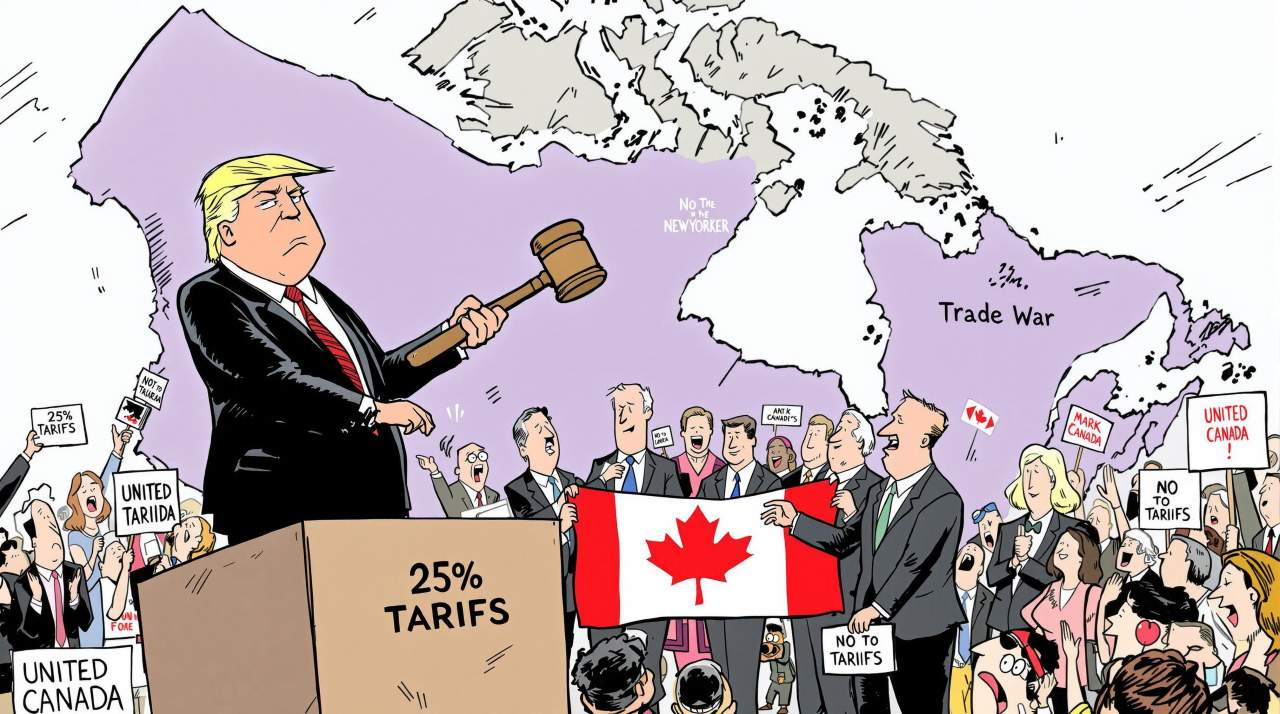
Donald Trump has always been a polarizing figure, but his latest actions have managed to do something few thought possible: unite Canada against him.
In a country known for its polite disagreements and regional divides, Trump’s aggressive trade policies and inflammatory rhetoric have sparked a wave of national unity, reshaped Canadian politics, and turned the upcoming federal election into a referendum on the U.S. president himself.
The Tariff That Broke the Camel’s Back
It all started with Trump’s decision to impose a 25% tariff on Canadian imports, citing Canada’s alleged role in the U.S. fentanyl crisis and illegal immigration. The claims baffled Canadians, as U.S. government data shows Canada contributes less than 1% to these issues. The tariffs, which also included steel and aluminum, were seen as an attack on one of America’s closest allies.
The response from Ottawa was swift. Prime Minister Justin Trudeau’s government retaliated with $21 billion in tariffs on U.S. goods and filed a complaint with the World Trade Organization. But the damage wasn’t just economic—it was deeply personal for Canadians. Trump’s repeated jabs, including referring to Trudeau as the “governor” of Canada and joking about annexing the country as the 51st state, struck a nerve.
A Nation Rallies
The fallout was immediate and visceral. Canadians began boycotting American products, pulling U.S. liquor from store shelves, and replacing Americanos with “Canadianos” at coffee shops. At hockey games, the U.S. national anthem was met with boos, a rare display of public hostility in a country that prides itself on civility.
Former Prime Minister Jean Chrétien quipped that Trump had “united us as never before,” and he wasn’t wrong. The anger transcended political lines, with even conservative-leaning provinces like Alberta rallying against Trump’s perceived disrespect.
Trudeau’s Exit and the Liberal Revival
Ironically, Trump’s actions may have saved Canada’s Liberal Party from political oblivion. Just months ago, Trudeau’s government was floundering. His approval ratings were at an all-time low, and the Conservatives, led by Pierre Poilievre, were poised for a landslide victory.
But Trump’s tariffs and insults shifted the narrative. Trudeau’s resignation in January, following internal party turmoil, paved the way for Mark Carney, a former central banker with a reputation for crisis management, to take the helm. Carney’s outsider status and financial expertise have made him a formidable opponent to both Trump and Poilievre.
The Election Becomes a Referendum
What was once a referendum on Trudeau’s leadership has now become a referendum on Trump. Polls show the Liberals, who were trailing by 20 points just weeks ago, have closed the gap with the Conservatives. The election, scheduled for October, is now a toss-up.
Poilievre, often described as “Trump light,” has struggled to distance himself from the U.S. president. His support for populist causes, including the 2022 anti-vaccine trucker protests, has made him a polarizing figure. Meanwhile, Carney has positioned himself as a unifying leader capable of standing up to Trump’s aggression.
What’s Trump’s Endgame?
The question on everyone’s mind is: What does Trump hope to achieve? His actions have alienated a potential ally in Poilievre, revitalized the Liberal Party, and strained U.S.-Canada relations. Even within the U.S., his trade policies have faced criticism for their economic fallout.
For Canadians, the stakes are clear. As Carney said in his inaugural speech as prime minister, “We will never, ever, in any way, shape, or form, be part of the United States.”
Trump’s actions have inadvertently given Canada a renewed sense of identity and purpose. Whether this unity will last beyond the election remains to be seen, but for now, one thing is certain: Donald Trump has done what no Canadian leader could—he’s brought the country together.
